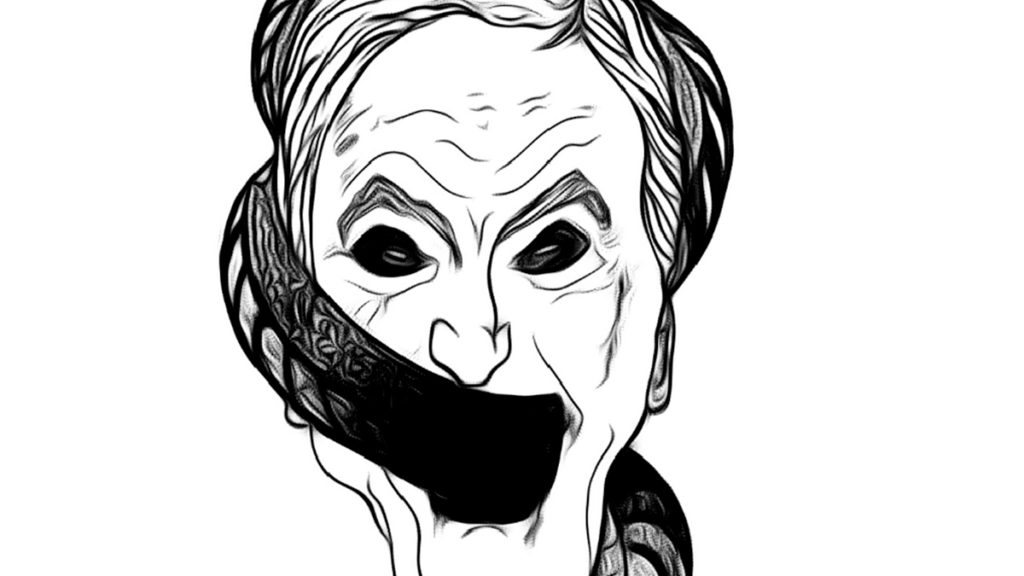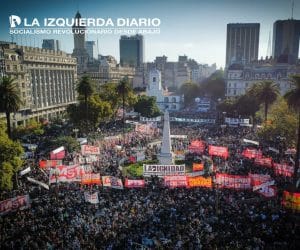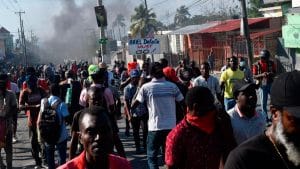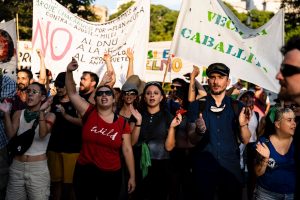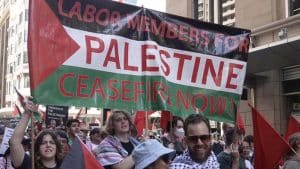The revolutionary days in Chile are the high point of a new political cycle that has begun across Latin America. It is not an isolated case, but rather part of the return of the class struggle at an international level, from France and the Spanish State to Hong Kong, through Lebanon, Iraq, and elsewhere. Its causes run deep. The 2008 economic crisis marked a turning point; the inequality generated by capitalism reaches increasingly unbearable levels; the traditional parties are sinking; so-called “globalization” is in crisis; and the nationalism of the great powers has returned.
Neoliberal hegemony is in crisis around the world. Today, it is imploding in Chile, which during the Pinochet dictatorship was neoliberalism’s laboratory—with its “Chicago Boys” trained in the United States. [1] At the beginning of the 21st century the crisis of neoliberalism was more advanced in Latin America than in the rest of the world. We saw the eruption of the masses take down presidents in Ecuador, Bolivia, and Argentina, and defeat an imperialist coup in Venezuela in 2002. These processes, though, were diverted, which gave rise to a second cycle, that of the “post-neoliberal” or “pink tide” governments, which could be sustained only thanks to an economic recovery driven by the historic commodities “boom” of the 2000s.
When that boom began to exhaust itself, the crisis struck Latin America systematically in 2013 and 2014, exposing that “post-neoliberalism” as a program to develop the national bourgeoisie had fallen flat. This scenario would lead to a third cycle, marked by the rise of the right—Macri in Argentina, Piñera in Chile, Kuczynski in Peru, and the institutional coup in Brazil—as well as the rightist inclinations of some of the “post-neoliberal” political figures themselves, with emblematic examples such as Daniel Ortega in Nicaragua or Lenín Moreno in Ecuador. That cycle’s high point was the rise of Bolsonaro’s right-wing populism in Brazil; the unsuccessful imperialist coup attempt this year in Venezuela marked the beginning of its decline.
These processes have passed through Puerto Rico, Honduras, Haiti, Ecuador, and now through Chile. They begin of a new cycle in Latin America marked by the emergence of the class struggle. Different elements of the previous political cycles have combined to give rise to a rather diverse scenario. The unique economic conditions that enabled the capitalists to end the cycle of uprisings at the beginning of the century, made possible at the time by Chinese expansion, are long gone; today, China and the United States are mired in a trade war. The exponential rise in inequality, low growth forecasts, and diminished commodity prices increasingly pose the perspective of a zero-sum game (and indebtedness) for the capitalists. In response, they propose all manner of mechanisms for attacking the masses, both directly and indirectly.
Confronted by the “lesser-evilism” inherent in the variants of post-neoliberalism, mass actions both in Ecuador and in Chile have shown how to stop the attacks. The bourgeoisie has been forced to make concessions to avoid losing everything. However, we cannot approach the current situation in the same way as earlier, more evolutionary situations, which were marked by the possibility of winning certain concessions from the state and not fighting against it. Today we see sudden changes in the relationship of forces: crisis situations that may or may not evolve into revolutionary situations, may be diverted, or may lead to reactionary backlashes. The overall result of the current cycle will not be determined by the sum of multiple partial results; viewed strategically, what has been put on the agenda is the possibility of ending decades of plunder and opening a revolutionary path in the region.
Revolutionary Days
We have seen revolutionary days in both Ecuador and Chile, more than just a sum of demonstrations, with actions that break the framework of bourgeois legality to a certain extent. We have seen these sorts of elements in both countries. The popular slogans of “Out with Lenín Moreno” and “Out with Piñera” have rang out in the streets. With the mass mobilizations threatening to topple them, both Moreno a few weeks ago and now Piñera attempt to survive through a combination of repression—including declaring a state of emergency—and partial concessions, and with help from the various bureaucracies that, as recent events show, are playing a decisive role in maintaining the bourgeois regimes at key moments.
Just a couple of weeks ago in Ecuador, we saw the response to Lenín Moreno’s “package” for complying with the IMF. It spurred more than ten days of massive blockades and mobilizations that confronted police and military repression in the streets. This was not limited to Quito. It spread to many towns in the country’s interior, with battle scenes like the one in Esperanza, a town of 8,000 with a majority indigenous population, where more than 1,500 people—youth in particular—organized to face down the forces of repression. One of the high points of the uprising in Quito came on October 12, when the capital city’s population streamed into the streets; not coincidentally, it was also when the repression was greatest, with firearms and snipers.
It was a rebellion of the masses, but the political and media spotlight fell in particular on the Confederation of Indigenous Nationalities of Ecuador (CONAIE). Throughout these days, its leadership tried to keep the indigenous movement separate from other sectors that had mobilized in the streets, justifying that with a pretense of not wanting to get mixed up with “Correísmo,” the opposition around former president Rafael Correa. As smoke was still rising from the barricades and the repression continued, they sat down for a “dialogue” with Moreno. When he was forced to withdraw Decree 883 due to the growing power of the mobilizations, the CONAIE leadership paved the way for defusing the street protests, actually saving Moreno’s skin without him even having to free those who had been arrested, cancel the state of emergency, or respond to all the movement’s demands.
This last week Chile had its own revolutionary days. Scenes of high school students jumping over and then destroying subway turnstiles aroused the sympathy of millions. By Friday, October 18, there was an increasingly massive rebellion underway. Occupations of subway stations were brutally repressed. When Piñera responded by invoking the “state security law” from the time of the dictatorship, on Saturday, October 19, the people’s anger was expressed in Santiago and the poor neighborhoods around the city, with mobilizations, pickets, cacerolazos (banging on pots and pans), and clashes with the police. That was followed by the declaration of a “state of constitutional emergency,” which only made the uprising larger. What had begun in Santiago turned into a national uprising against Piñera and the regime inherited from the Pinochet dictatorship. Chile today is a society in which everything is being privatized, where 50% of the poorest households have only 2.1% of Chile’s total net wealth, and where 26.5% of that wealth is concentrated among the richest 1%.
The government did announce the “suspension” of the transit fare increase, but the military simultaneously decreed a “curfew”—something that had not been done since the dictatorship. It was challenged with barricades and cacerolazos. As the anger increased, buses were burned, hundreds of large stores were looted, and police stations and other public buildings were set ablaze. The fighting continued on Sunday, October 20. On Monday, October 21, there were mass demonstrations throughout the country. When Piñera declared, “we are at war,” the response came in the form of mass demonstrations on Tuesday, October 22. Alongside the students and youth, strategic sectors of the working class now entered the scene. They shut down 90% of the ports. The Escondida miners paralyzed the world’s largest private mine. Under the pressure of these events, the bureaucracy of the CUT (the trade union confederation) called for a “general strike,” but a “strike of empty streets” with no mobilizations—an approach that was, by that point, unimaginable.
On Tuesday night, the government launched its so-called “social agenda,” granting some crumbs to protect the social and political regime inherited from Pinochet. On Wednesday, the first day of the general strike, hundreds of thousands of people mobilized throughout Chile, including workers, youth, residents of the poor neighborhoods, women, and indigenous communities. Public sector workers, healthcare workers, teachers, miners, dockers, and the commercial and service unions all joined the demonstrations with their banners. There were minor clashes involving the thousands of high school students, university students, and young workers that filled Plaza Italia and La Alameda in Santiago. The strike and mobilizations continued on Thursday. But at the same time, the Communist Party and the Frente Amplio (Broad Front)—the left wing of the regime—along with the trade union, student, and “social” bureaucracies they control, openly redoubled their efforts to save Piñera’s skin.
The Explosion of Social Hatred and Attempts at an Institutional Solution
The process in Chile began as a spontaneous uprising that surprised everyone. The heads of the most important political, trade union, and student organizations remained on the sidelines as the conflict escalated in response to the government’s actions.
But then, under pressure from the unfolding events, the bureaucratic leaderships of the labor, student, and “social” movements—mostly belonging to the Communist Party or the Frente Amplio—took turns calling for a “general strike,” while really meaning a strike that would do no more than let off steam. Piñera also shifted from his “we are at war” statement to a “social agenda” aimed at dividing the movement, separating out the middle class and continuing the brutal repression in the poor neighborhoods around Santiago, to prevent the mobilizations in the streets from heading to the centers of power. Along with this, a massive campaign began in the mainstream media: it sought to counterpose the most combative actions of the youth vanguard with the peaceful and festive middle-class movement, criminalizing the poorest among the protestors.
The Communist Party, the Frente Amplio, and their respective bureaucracies went from rejecting any negotiations until the military was withdrawn from the streets to propping up the trap of “dialogue,” demanding that it include “social and citizen organizations.” [2] At the same time, their deputies staged a circus in parliament, proposing measures that had no relation to the reality of a country on fire, with murderous military repression in the streets. One of the CP’s leading members, Camila Vallejo, while celebrating the preliminary approval of the bill for a 40-hour workweek in the Chamber of Deputies, declared, “It isn’t about going against the president.” Thus, the regime’s own left wing exposed that at best its role is as a parasite on the movement. These parties were key in preventing the labor movement and the student movement from coming out in full force.
In this context, a third moment took place: the massive demonstrations on Friday, October 25, the largest since the end of the dictatorship. They exceeded 1 million people in Santiago, and there were mass marches throughout the country, all demanding “Out with Piñera” and repudiating the repression. Originally called on social media, these demonstrations had a peaceful and festive tone, with few confrontations. They were different than in the first moment of the process, which was marked by an outpouring of the social hatred felt by millions of the poor and marginalized sectors—First Lady Cecilia Morel characteristically referred to them as a “foreign alien invasion”—along with the youth, responding to government repression. This explosion could be controlled only with batons and guns. Valparaíso was an exception on that Friday, with a different dynamic: 20,000 people advanced on the national congress, which has its seat in the coastal city, and were brutally repressed.
The sheer size of the mobilizations is what motivated Piñera’s cynical “greeting” to the demonstrators. On Saturday, October 26, he continued trying to balance on the tightrope of his “social agenda,” which the overwhelming majority of the population rejects, adding a promise to reshuffle the cabinet and perhaps lift the state of emergency—after already leaving a trail of dead and thousands wounded and detained. The policy of partial “concessions” with a lot of fine print, the resignation of ministers, or even bigger concessions like those requested by the Financial Times or by Andrónico Luksic himself (owner of one of the largest conglomerates in Chile), is nothing more than an attempt to prevent the Piñera government from falling as a result of the direct action of the masses. This would challenge the entire inheritance of the Pinochet dictatorship.
The Types of Conflict and How to Evaluate their Results
In his classic treatise On War, the Prussian military theorist and general Carl von Clausewitz distinguished between conflicts with “limited” objectives and those in which the aim is “decisive”—namely, the defeat of the opponent. The results of each are measured in quite different ways. In the first case, “war is composed of single independent results, in which, as in any number of games played, the preceding has no influence on the next following; everything here, therefore, depends only on the sum total of the results.” In the second, “everything is the effect of its natural and necessary cause, one thing follows another in rapid succession … there is … only one result, to wit, the final result.” Hence, the conflict is “an indivisible whole.” [3] When we speak of revolutionary days like those in Chile, the second approach is what counts.
In Chile, the spontaneity of the mass movement has modified the relationship of forces. But the operation to save Piñera is in full swing. The policies of the Communist Party are nothing more than leftist versions of the attempt to rescue the institutions—whether it is the CP’s effort to undercut “Out with Piñera,” instead relying on a parliamentary maneuver so that the Senate decides whether to dismiss him, the promotion (along with Frente Amplio) of a dialogue with Piñera “without exclusions,” or a Constituent Assembly within the framework of the current regime, which both parties are proposing. But precisely because “it is not 30 pesos, it is 30 years”—as is shouted in the streets—there is no positive path forward for the working class that employs the mechanisms of a regime inherited from Pinochet.
Given all these maneuvers and traps, it is necessary to set up independent organizations that can bring together all the sectors in struggle that the regime seeks to divide. Hence the importance of organs of self-organization: assemblies, coordinators, or committees of workers, students, and residents. There are already significant examples to guide such self-organization, such as the Emergency Committee in Antofagasta, or around the Barros Luco hospital, or the GAM Unified Union in Santiago.
If these revolutionary days have established anything, it is that only through struggle and mobilization can we make the oppressors give in. Only through the methods of the class struggle, of the political general strike—in the sense of “combat” as developed by Rosa Luxemburg, and not simply as “pressure” like the CUT leadership conceives it—can Piñera be ousted with a solution that benefits working people. That is why revolutionary socialists propose a truly free and sovereign Constituent Assembly, on the ruins of this regime inherited from the dictatorship, to resolve all the fundamental questions while we fight for a government of working people that once and for all takes power out of the hands of the capitalists.
This is the perspective that hundreds of comrades in the Revolutionary Workers Party (PTR) are taking with them into the streets of Santiago, Antofagasta, Valparaíso, Arica, Temuco, Puerto Montt, Rancagua, and other major cities in the country. This is the perspective spread by La Izquierda Diario, which in the course of the rebellion has been visited one million times in October, reaching important sectors of the movement.
New Times
It is clear that the situation of the class struggle is changing, both in and beyond Latin America. This new wave of protests challenges not only neoliberalism’s famous slogan, “there is no alternative,” but also the resignation to “lesser-evilism” by neoreformism and Latin American “post-neoliberalism.” Both Ecuador and Chile show how to defeat the austerity plans that attack working people. But it is very far from being a clear road, as events show. The result of each of these clashes is certainly not neutral.
According to columnist Eduardo Febbro: “The sequence of rebellions was unleashed by Argentina in 2017, when the Macri government repressed the social protests against pension reform.” [4] That can be debated, especially given the different scales of the processes, but the truth is that the actions of the trade union bureaucracy and Kirchnerism were key to liquidating the class-struggle perspective that was posed those days of December 14 and 18, thus rescuing Macri’s government. The cost of this was nothing less than allowing Argentina to be mortgaged to the IMF, including a phenomenal currency devaluation, an inflationary spiral, a recession, the loss of more than a quarter of real wages—propelling more than half of all children into poverty— and continual price increases for electricity, water, and natural gas, all of which benefited the banks, the big capitalists, and agribusiness. It is the same program that the Peronist Frente de Todos (Front of All) now says is necessary, but of course promising to “share the costs.”
Keep in mind that this is not simply a balance sheet of the past, but a point of view that is necessary to understand the present in this new cycle of the class struggle. All indications are that it is here to stay.
Notes
1. The “Chicago Boys” is a reference to a group of Chilean economists that trained at the University of Chicago as disciples of the notorious free-marketeer Milton Friedman, and then played a prominent advisory role during the military dictatorship.
2. The Communist Party demanded the participation of the “Trade Union Unity Board” composed of organizations they and the Frente Amplio run, including the CUT, the Colegio de Profesores (teachers association), Confech (the Confederation of Chilean Students), the alliance against the pension reform No+AFP, CONFUSAM (the healthcare workers confederation), CONES (the national alliance of secondary school students), the Federation of Copper Workers, and others.
3. Gen. Carl von Clausewitz, On War, first published 1832, translated by Col. J.J. Graham, 1874. Emphases in the original.
4. Eduardo Febbro, “La rebellion humana,” Pagina 12.
First published in Spanish on October 27 in Ideas de Izquierda.
Translation: Scott Cooper


